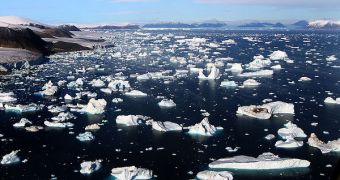Between recent ice ages, temperatures in Antarctica apparently increased significantly, a new body of researches shows. This has led scientists to conclude that the Eastern part of the Southern continent, which is currently melting faster due to global warming, also did so in the past. This demonstrates an ongoing susceptibility to climate change and increasing temperatures, and any changes in its sizes and ice contents should be viewed as a clear indicator of the way temperatures fluctuate on the planet.
The recent study was conducted on ice core samples, drilled from great depths in East Antarctica. According to previous investigations, it would appear that the temperature rises that occurred between the latest Ice Ages were in the vicinity of three degrees Celsius higher than they are today. But the recent research seems to indicate that the rise was in fact six degrees above current levels. The difference is staggering, especially when considering that, if this happened today, most coastal regions around the world would be flooded, and the map of the world redrawn.
The latest interglacial periods occurred 125,000, 240,000 and 340,000 years ago, respectively, the research team says. In charge of the new study was expert Louise Sime, a scientist with the British Antarctic Survey (BAS), in Cambridge, the United Kingdom. The group draw its conclusion after analyzing the ratios of hydrogen to oxygen isotopes that were stored in the ices over the millennia. The ice layers maintain an accurate description of the atmospheric conditions that existed in their surroundings as they formed. In order to increase the accuracy of its results, the team compared ratio readings from three locations with data derived from global computer models.
“The available evidence only fits together if we assume peak temperatures around six degrees above current values. We didn't expect this at all,” Sime reveals. The computer-model data were therefore under-appreciative of the actual climate conditions. The group published its findings in the latest issue of the respected scientific journal Nature, according to Nature News. “We don't know if the present state of the climate system might allow for a six-degree warming in East Antarctica, but it is not impossible,” Sime concludes.

 14 DAY TRIAL //
14 DAY TRIAL //